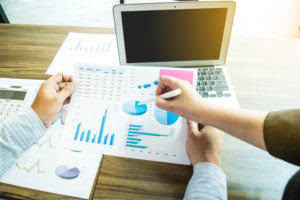
When an employee tries to make a purchase outside these parameters, the transaction is automatically declined—no awkward conversations or Accounts Receivable Outsourcing retroactive policy enforcement needed. When you use the wood to manufacture doors, you record $10,000 as an expense for maple wood. The revenue from the door sale is matched with the wood and other expenses to determine the profit. Here, we'll break down each of the four elements in greater detail and explain what is required from the cost manager at each stage. Non-profit trusts are legal entities that are created to hold and manage assets for a charitable,…
- In this section, we will summarize the main points of the blog, provide some recommendations for implementing a cost control system, and call for action from the readers.
- Efficient procurement and vendor management play a vital role in cost control.
- A well-thought-out budget is your first line of defense against cost overruns.
- This practice also reduces indirect spending, such as costs for office supplies or equipment.
- The report should draw management’s attention to exceptionally good or bad performance so that management by exception may be carried out effectively.
- Costing sheet configuration determines how cost estimates calculate overhead costs.
Procurement Strategy: Your Action Plan for Proactive Purchases
- For reporting purposes, we analyze cost components and structures and how they group similar costs, such as material, labor, and overhead, as shown in Figure 6.
- When it comes to managing costs, businesses generally categorise their expenses based on how they change over time and how closely they’re linked to their core operations.
- Project cost control is a critical skill that directly impacts a project’s success.
- Rising costs in areas like labor, materials, and technology can eat into profits if not managed effectively.
- We examine costing sheets and how you use them to set up overhead calculation, as shown in Figure 5.
All spend data from across your company is compiled digitally, including digital receipts, which drastically reduces the amount of time your team needs to spend on reporting. Cost accounting is the monitoring, analyzing and recording of variable and fixed expenses related to the production of goods and services. Through this process, project managers can adopt greater productivity measures, make better strategic decisions and keep to their budget. This is all done, as will cost control, to raise the net profit margins through budgeting, forecasting, the price of the product or service and aligning with corporate strategy. Cost control works by identifying and reducing expenses to increase the profitability of the company. Cost control as a process begins with estimating costs, making a budget and then implementing cost control methods.
tips for improving expense control in your business

Implementing efficient production methods helps minimise material scrap and defects, saving you money in the long run. The key to effective cost control is accurate reporting, continuous analysis and data-driven forecasting. All this may sound like a complex and overwhelming task, but with the right tools and techniques, it becomes much easier to cost controlling manage. Using cost accounting software or enterprise resource planning systems allows you to track expenses across your entire business. For example, using cost analysis to evaluate business spending patterns allows companies to pinpoint areas where they can cut costs without affecting operations. Businesses that track their cost performance regularly can identify inefficiencies and adjust their pricing strategies.

Deliver your projectson time and on budget
- Especially when a project is complicated, expenses can send your costs skyrocketing more quickly than you expect.
- It’s important to use financial reports, dashboards and project updates to communicate both good and bad news to help avoid surprises.
- Variable costs are one influence on your expenses that are challenging to control.
- By tracking key performance indicators (KPIs) related to expenses, profitability, and efficiency, businesses can identify cost-saving opportunities and make data-driven decisions.
- Use this free Cost Benefit Analysis Template for Excel to manage your projects better.
- This discussion will explore its key components and how it differs from cost reduction.
No matter what industry you’re in or what position you hold, it’s important to gain a clear understanding of what cost control is and how it works. In this post, we’ll break down what cost control means and explore practical strategies to help you get a handle on your expenses. This gets everyone back to their core job functions more quickly and lets them focus on driving growth. In this article, we offer a detailed explanation of cost control and why cost control is so important for small businesses. We also offer six cost control tips that you can start using today to maximize your company’s potential for profit. The choice for the cost estimation techniques depends on the level of information available.
- Top-down estimating is a method where the overall project cost is estimated first, and then individual costs are deduced from this total.
- It contains the Purchase Price field, which the standard costestimate searches when determining the purchase price.
- In conclusion, understanding and identifying step costs is essential for effective cost management.
- It is a method of accounting in which costs are identified with persons responsible for their control rather than with products or functions.
- You will work closely with our production and sales teams to prepare budgets and track actual costs relative to the budget, identifying strategies to improve efficiency and reduce costs.
They will have developed critical analytical skills and a deep understanding of the financial aspects of bookkeeping project management. Cost Controllers perform a range of tasks related to financial planning, record-keeping and cost analysis. Effective cost control not only contributes to financial efficiency but also supports environmental sustainability by minimizing waste. It starts with an overall project budget and then breaks that budget into smaller components. It’s useful when you need to establish a rough budget quickly or when there’s less information available in the planning stages.

Ready to save time and money?

By implementing these best practices, organizations can enhance their cost control efforts, optimize resource allocation, and achieve sustainable financial performance. Measuring performance against cost targets and benchmarks is one of the most effective ways to control cost. To assess the efficiency of your cost management effort you can track key performance indicators related to cost, such as cost per unit, cost variance, or cost-to-revenue ratios. In this strategy the inventory levels are effectively managed to avoid overstocking or understocking. By monitoring and controlling inventory, organizations can minimize carrying costs, reduce the risk of obsolete stock, and optimize cash flow.